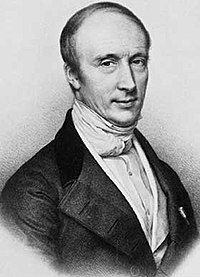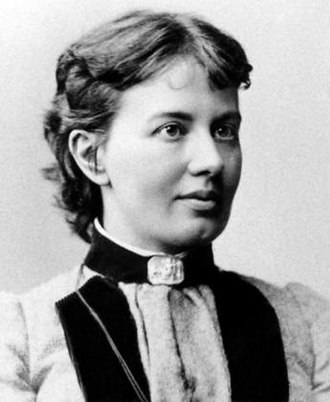Return to computing page for the first course APMA0330
Return to computing page for the second course APMA0340
Return to computing page for the fourth course APMA0360
Return to Mathematica tutorial for the first course APMA0330
Return to Mathematica tutorial for the second course APMA0340
Return to Mathematica tutorial for the fourth course APMA0360
Return to the main page for the course APMA0330
Return to the main page for the course APMA0340
Return to the main page for the course APMA0360
Introduction to Linear Algebra with Mathematica
Glossary
Preface

Cauchy's father was active in the education of young Augustin-Louis. Laplace and Lagrange were visitors at the Cauchy family home and Lagrange in particular seems to have taken an interest in young Cauchy's mathematical education. Lagrange advised Cauchy's father that his son should obtain a good grounding in languages before starting a serious study of mathematics. In 1802 Augustin-Louis entered the École Centrale du Panthéon where he spent two years studying classical languages.
From 1804 Cauchy attended classes in mathematics and he took the entrance examination for the École Polytechnique in 1805. He was examined by Biot and placed second. At the École Polytechnique he attended courses by Lacroix, de Prony and Hachette while his analysis tutor was Ampère. In 1807 he graduated from the École Polytechnique and entered the engineering school École des Ponts et Chaussées. He was an outstanding student and for his practical work he was assigned to the Ourcq Canal project where he worked under Pierre Girard.

n 1868 Kovalevskaya entered into a marriage of convenience with a young paleontologist, Vladimir Kovalevsky, in order to leave Russia and continue her studies. The pair traveled together to Austria and then to Germany, where in 1869 she studied at the University of Heidelberg under the mathematicians Leo Königsberger and Paul du Bois-Reymond and the physicist Hermann von Helmholtz. The following year she moved to Berlin, where, having been refused admission to the university on account of her gender, she studied privately with the mathematician Karl Weierstrass. In 1874 she presented three papers—on partial differential equations, on Saturn’s rings, and on elliptic integrals—to the University of Göttingen as her doctoral dissertation and was awarded the degree, summa cum laude, in absentia. Her paper on partial differential equations, the most important of the three papers, won her valuable recognition within the European mathematical community. It contains what is now commonly known as the Cauchy-Kovalevskaya theorem, which gives conditions for the existence of solutions to a certain class of partial differential equations. Having gained her degree, she returned to Russia, where her daughter was born in 1878. She separated permanently from her husband in 1881.
The Cauchy--Kovalevskaya theorem on existence and uniqueness of solutions to systes of PDEs. This theorem establishes sufficient conditions on the individual PDEs of the system, as well as the initial conditions, called Cauchy data.
Suppose u1, u2, … , uM are dependent variables of time t and spacial variables x1, x2, … , xN. The general expression for a PDE of variable um (1 ≤ m ≤ M) is
Recall from experience with ODEs that a first order equation
In similar way, initial data is needed in the case of the system of PDEs for a particular solution to be determined. Equation \eqref{EqCK.1} is an expression for the km-th partial derivative of dependent avriable um with respect to time t. Consequently, initial functions for all partial derivatives of order zero to km −1 of each dependent variable must be specified. The general form of such data is
Before the Cauchy--Kovalevskaya statement is given, it make sense to refresh your knowledge about analytic or holomorphic functions. For that purpose, suppose f is defined in terms of N variables x1, x2, … , xN. The point x0 = (x01, … , x0N) is said to be interior to the domain Ω of f if there exists a positive real number ϵ such that the N-dimensional "ball" of radius ϵ (often is refderred to as the ϵ-neighborhood of x0) is contained entirely within Ω. The function f is said to be holomorphic or analytic (however, generally speaking, definition of analytic functions is more general and include holomorphic functions) at x0 if f can be expressed as a power series about x0 such as